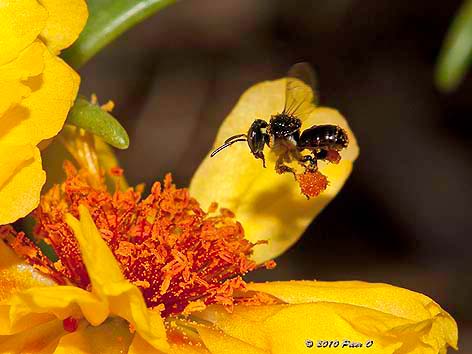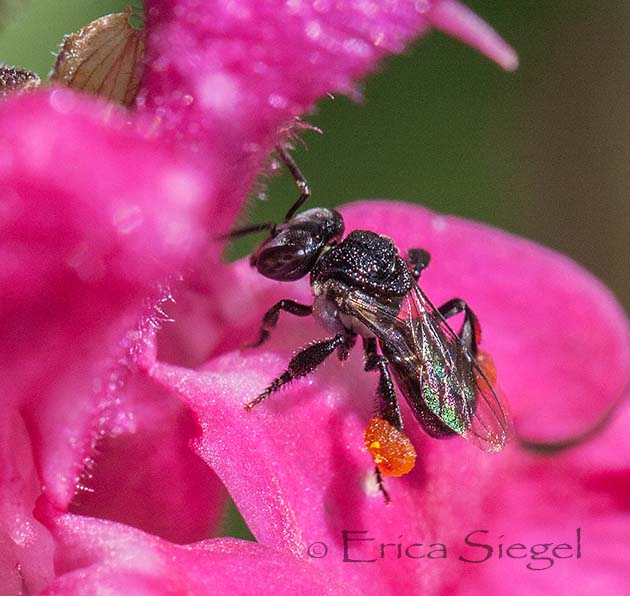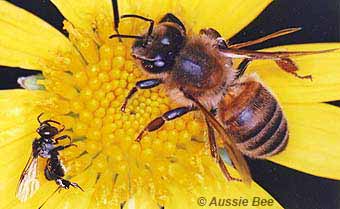A Buzz of Sweetness: Exploring the World of Stingless Bees in Australia
A Buzz of Sweetness: Exploring the World of Stingless Bees in Australia

Australia, a land of diverse landscapes and unique wildlife, is also home to a fascinating group of pollinators – the stingless bees. These tiny creatures, often overlooked in the shadow of their more aggressive cousins, play a vital role in the Australian ecosystem, contributing to the pollination of native plants and producing a unique, flavorful honey.
A Journey Through the World of Stingless Bees
Related Articles: A Buzz of Sweetness: Exploring the World of Stingless Bees in Australia
- A Taste Of The Outback: Exploring Australia’s Native Fruits
- The Stolen Generation: A Legacy Of Trauma And Resilience In Australia
- Unfurling The Colors Of Identity: Understanding The Meaning Behind The Aboriginal Flag
- Weaving The Web Of Life: How Aboriginal Relationship With Land Ensures Economic Survival
- Unlocking Nature’s Secrets: How Native Australian Ground Covers Revitalize Your Soil
While the term "stingless bee" might conjure images of docile, harmless insects, these bees are not entirely devoid of defense mechanisms. Their stings, while present, are too small to penetrate human skin, making them a much safer alternative to their honeybee counterparts. However, their lack of a potent sting doesn’t make them any less remarkable.
A Glimpse into Their Diversity
Australia boasts a diverse array of stingless bee species, with over 50 different types identified. These species vary in size, color, and nesting habits, adding a layer of intrigue to their study. Some of the most common species include:
- Tetragonula carbonaria: Known for their dark, almost black coloration, these bees are often found in urban areas and produce a rich, dark honey.
- Austroplebeia australis: Characterized by their reddish-brown color, these bees are highly efficient pollinators and are known for their gentle nature.
- Trigona hockingsi: Distinguished by their distinctive orange and black markings, these bees are found in coastal regions and produce a light, floral honey.

A Symphony of Collaboration: The Stingless Bee Hive
Stingless bee hives are a marvel of natural engineering. Unlike the familiar hexagonal honeycomb structures of honeybees, stingless bees construct their hives from a unique material called "cerumen," a mixture of wax and resin. These hives are often found in cavities within trees, walls, or even under the ground.
Within the hive, a complex society operates, with specialized roles for each bee. The queen bee is responsible for laying eggs, while worker bees perform tasks such as foraging, building the hive, and caring for the brood. Drones, the male bees, have a singular purpose: to mate with the queen.
The Gift of Honey: A Sweet Reward
Stingless bees produce a honey that is unlike any other. It is typically thinner and more viscous than honeybee honey, with a distinctive flavor profile that varies depending on the species and the flowers from which it is gathered. This honey is often described as having floral, fruity, or even spicy notes.

Stingless honey is not only a culinary delight but also a source of health benefits. It is rich in antioxidants, vitamins, and minerals, and is believed to have anti-inflammatory and antibacterial properties.
The Importance of Stingless Bees: More Than Just Honey
Beyond their honey production, stingless bees play a crucial role in the Australian ecosystem. As efficient pollinators, they contribute to the reproduction of native plants, ensuring the survival of diverse flora and fauna. They are particularly important for the pollination of many native trees, fruits, and vegetables, contributing to the biodiversity and resilience of Australian ecosystems.
Threats to Stingless Bees: A Call to Action
Like many other pollinators, stingless bees face a number of threats, including habitat loss, pesticide use, and climate change. These factors can disrupt their delicate balance, leading to a decline in their populations.

To protect these valuable pollinators, several initiatives are underway:
- Habitat conservation: Protecting and restoring native vegetation provides essential habitat for stingless bees.
- Sustainable beekeeping: Promoting responsible beekeeping practices helps to ensure the health and well-being of stingless bee colonies.
- Public awareness: Educating the public about the importance of stingless bees and the threats they face is crucial for their conservation.
The Future of Stingless Bees: A Buzz of Hope
Despite the challenges they face, there is a growing awareness of the importance of stingless bees in Australia. This is leading to an increase in research and conservation efforts, giving hope for their future.
A Journey of Discovery: The Fascinating World of Stingless Bees
The world of stingless bees is a fascinating one, filled with intricate social structures, unique adaptations, and a sweet reward in the form of their honey. By understanding and appreciating these remarkable creatures, we can contribute to their conservation and ensure their continued presence in the Australian landscape.
FAQ about Stingless Bees in Australia
1. Are stingless bees truly stingless?
While stingless bees possess a stinger, it is too small to penetrate human skin. This makes them a much safer alternative to honeybees, especially for those with allergies.
2. What kind of honey do stingless bees produce?
Stingless honey is typically thinner and more viscous than honeybee honey, with a distinctive flavor profile that varies depending on the species and the flowers from which it is gathered. It is often described as having floral, fruity, or even spicy notes.
3. What are the benefits of stingless honey?
Stingless honey is rich in antioxidants, vitamins, and minerals, and is believed to have anti-inflammatory and antibacterial properties. It is a delicious and nutritious addition to any diet.
4. How can I help protect stingless bees?
You can help protect stingless bees by supporting habitat conservation, practicing sustainable beekeeping, and educating others about their importance.
5. Where can I find stingless bee honey?
Stingless bee honey is becoming increasingly popular and can be found at farmers markets, specialty stores, and online retailers. You can also find local beekeepers who sell their honey directly.
6. Can I keep stingless bees in my backyard?
Keeping stingless bees is becoming increasingly popular, and many people find it rewarding. However, it is important to research the requirements of each species and ensure that you have the necessary space and resources before starting a hive.
7. What are the challenges facing stingless bees?
Stingless bees face a number of threats, including habitat loss, pesticide use, and climate change. These factors can disrupt their delicate balance, leading to a decline in their populations.
8. What are the future prospects for stingless bees in Australia?
There is a growing awareness of the importance of stingless bees in Australia, leading to an increase in research and conservation efforts. This gives hope for their future and ensures their continued presence in the Australian landscape.
9. Are stingless bees important for pollination?
Yes, stingless bees are highly efficient pollinators, playing a crucial role in the reproduction of native plants and contributing to the biodiversity of Australian ecosystems.
10. Can I buy stingless bee hives?
Yes, you can purchase stingless bee hives from reputable beekeepers or online retailers. However, it is important to research the requirements of each species and ensure that you have the necessary space and resources before starting a hive.

Closure
Thus, we hope this article has provided valuable insights into A Buzz of Sweetness: Exploring the World of Stingless Bees in Australia. We thank you for taking the time to read this article. See you in our next article!


